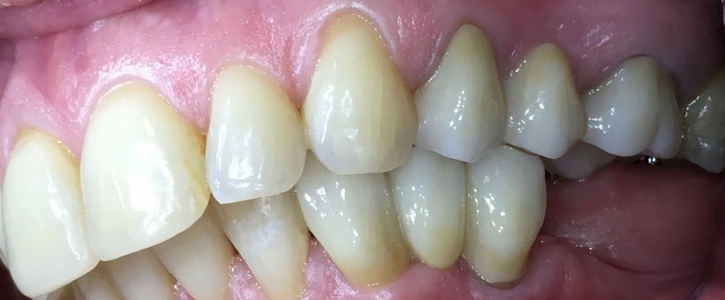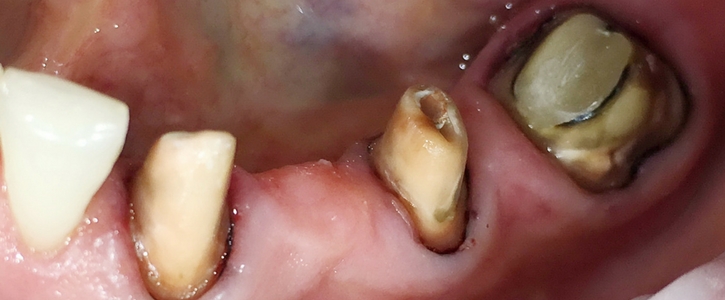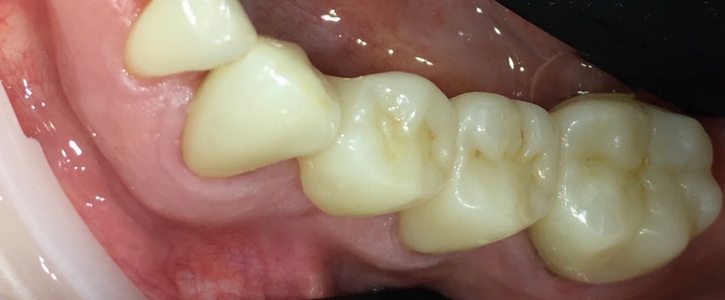Dental Bridges
Dental Bridges / from 2 200 EUR
The bridge dental prosthesis is a classic method for reconstruction of missing teeth. Until recently, bridges were made of metal and metal ceramics only. However, as soon as dentistry started to use modern aesthetic materials such as zirconium and ceramics, metal alloys were used less often. Today, bridges are fitted not only on teeth, but also on implants.


In this article, we introduce the advantages of modern materials to you, explain why metal structures are becoming a thing of the past and in what cases bridge dental prostheses are used.
Benefits of making dental prostheses (dental bridges) from zirconium and ceramics at dSmile clinic


A bridge for side teeth is made from zirconium dioxide – a crystalline material that has extraordinary features:
- white colour;
- high strength;
- digital manufacturing process that ensures high-precision fit of the structure;
- absence of allergies;
- lifespan of more than 10 years.


A bridge for front teeth is milled out from pure ceramics with the following benefits:
- high aesthetics
- precision fit at the dental tissue
- biocompatibility and absence of allergies
- long lifespan.
All the steps – from teeth preparation (grinding) to fitting the bridge on to the teeth – are carried out with the use of a microscope, which greatly increases the quality of the performed interventions.
The use of computer technology ensures the high precision of the structure, provides great manufacturing speed and does not expose the patient to the unpleasant procedure of making impressions that used to be necessary.


Drawbacks of using metal ceramic bridge prostheses (dental bridges) and crowns:
- aesthetic aspect – change of the gum colour above the crown (blue tinge);
- due to the presence of metal, the produced teeth lack the natural translucency;
- imprecise fit due to the production technique;
- if there are different metals present in the oral cavity, it can result in galvanism (metallic taste in the mouth, tongue tingling).
Indications for making crowns and dental bridges:
- replacement of old bridges;
- impossibility of performing implantation;
- the patient is afraid of a surgical intervention or does not want it;
- making of a bridge on implants.
In dentistry, the bridges are fitted not only on teeth, but also on implants. Unlike bridges on a patient’s own teeth, bridges on implants can be both cemented and screwed.
When bridges are fitted on implants
When there are 3–4 teeth missing: in such a case, 2 side implants and a bridge with 4 units are fitted.
When reconstructing the entire tooth row: All-on-4, All-on-6. There are 4–6 implants placed which provide sufficient support for 12 teeth.








